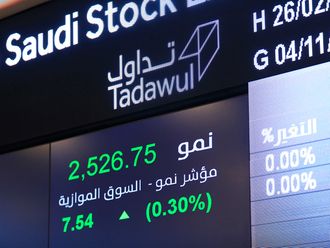Dubai:
The supply glut is just worsening by the day, and even the prices.
After vows to stabilise the oil market by the Organisation of the Petroleum Exporting Countries (Opec) and non-Opec members, now more supplies from Nigeria and Libya are threatening the recent price recovery ahead of the much anticipated oil producers meeting in Algeria next week.
Production from Nigeria and Libya hit 1.8 million barrels per day (bpd) in August, almost half of 2013 production levels. Any additional supplies is expected to add to the current overhang of supplies, which according to the International Energy Agency will last deep into 2017.
Oil prices, which recovered more than 60 per cent after prices hit a 12 years low to sub-$30 per barrel in January, traded at $45 per barrel on Friday.
“With these extra barrels potentially hitting the market, the pressure on prices and the need for other producers to cut production may continue to weigh on prices. This at a time of year where crude oil prices from a seasonal perspective tend to trade lower,” said Ole Hansen, head of commodity strategy at Saxo Bank said.
Analysts are not sure of a deal even as Iran and Saudi Arabia have been raising exports despite the approaching meeting from September 26 to 28 in Algeria.
“I am sceptical not only about the willingness of Saudi, the Opec in general, and Russia to reach an agreement, but also about the capacity of such agreement to impact prices,” Francisco Quintana, Head of Strategy at Foresight Advisors said over email. “I am still comfortable with a 10 per cent range around the $50 benchmark as the final target for the year,” Quintana said.
At the G20 meeting in China earlier in the month, Saudi Arabia and Russia vowed to undertake necessary steps to stabilise the oil market, but gave no concrete details. Other countries like the UAE, Kuwait also welcomed and agreed to support any moves.
However, about the supply and demand dynamics and recent estimates by IEA and Opec, according to Quintana, “depict a complicated picture, in which supply is resilient or expanding, and demand is weakening in China and India.”
“We are only seeing adjustments in over-optimistic demand forecasts that took place over the last years,” Quintana added.












